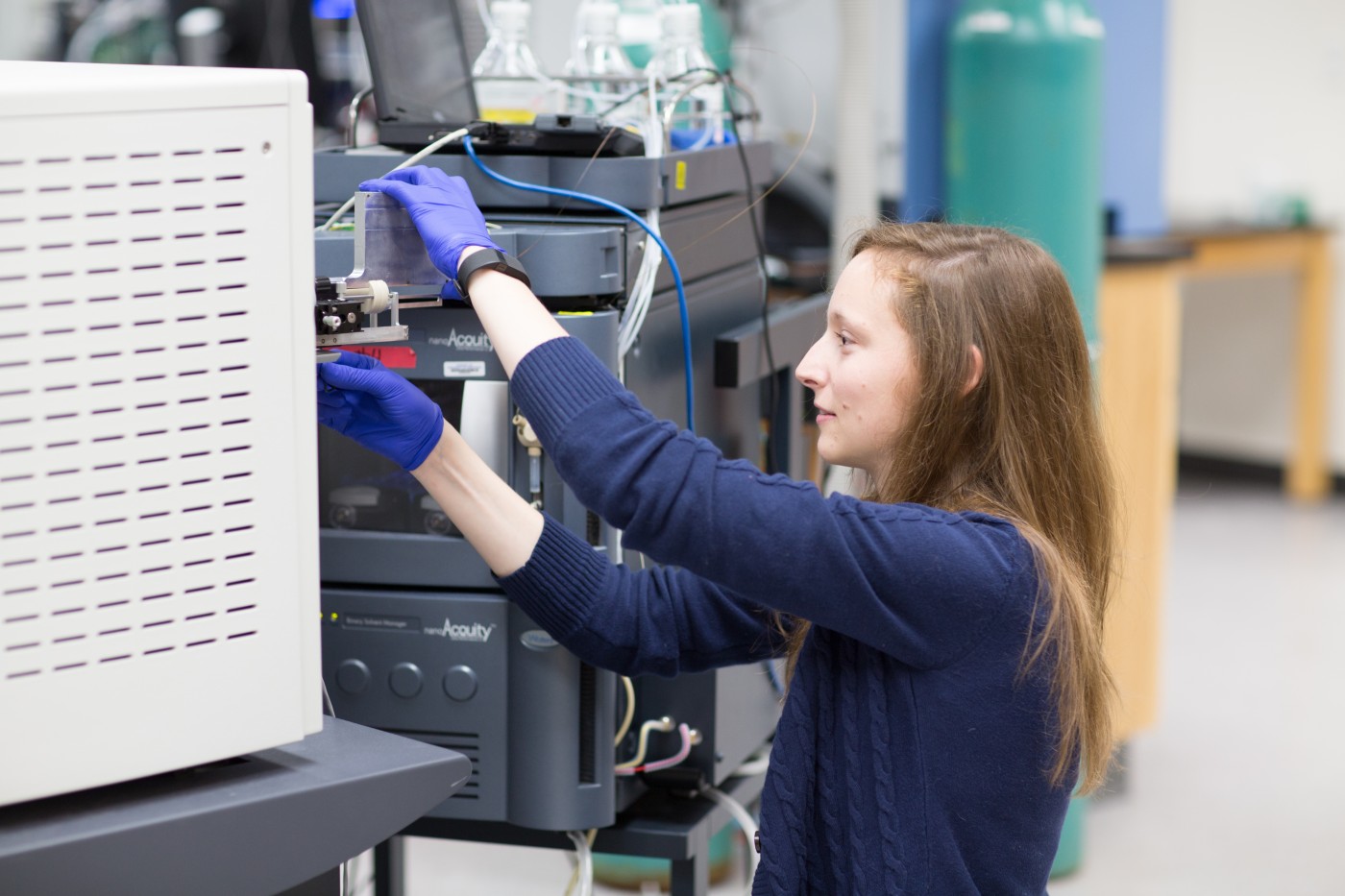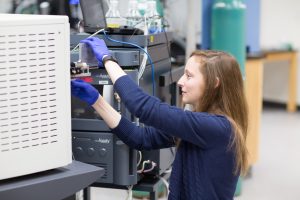Work on Protein Map of Mitochondria Leads to Discovery of 3 Proteins Likely Tied to Disease

Emily Wilkerson, a UW-Madison rraduate student, prepares a mass spectrometer for an analysis. (Courtesy,
A team of scientists led by Dr. David Pagliarini, PhD, recently identified three new proteins that relate to mitochondrial disease while delving into the incomplete protein map of mitochondria. The team at University of Wisconsin-Madison published two papers in the journal Molecular Cell describing these proteins.
Pagliarini, a UW-Madison associate professor of biochemistry, is studying more than 200 proteins in mitochondria that currently have no known, defined purpose to create a complete map of mitochondrial function — one that might point to the origins of 150 mitochondria-associated, but poorly understood, diseases. To do this, Pagliarini looked at how these proteins interacted with other proteins.
He hopes this work will serve as a foundation for future research into ways of fixing the dysfunctional proteins involved in mitochondrial diseases.
“We began by trying to learn something about what these proteins do by understanding what other proteins they physically interact with,” Pagliarini, who is also director of metabolism for the Morgridge Institute for Research, said in a news release. By collaborating with Dr. Josh Coon, Pagliarini’s laboratory was able to use mass spectrometry to identify proteins present in samples.
In the team’s first article, “Mitochondrial Protein Interaction Mapping Identifies Regulators of Respiratory Chain Function,” a selection of 50 mitochondrial uncharacterized (x) proteins (MXPs) were studied. MXPs by definition have no significant functional notation in literature. After spending several thousand hours on thousands of mass spectrometry samples, the team narrowed a list of 100,000 interactions down to 2,000. “These top 2 percent of interactions are really telling us something about protein function and will be very useful to the research community,” Pagliarini said.
The three major proteins identified were related to three important proteins in the mitochondria: complex I, the electron transferring flavoprotein (ETF), and coenzyme Q.
C17orf89 was found to be essential to proper complex I function. Without C17orf89, oxygen consumption rate in experimental cells decreased because the respiratory chain was not working as it should. LYRM5 was found to directly interact with ETF. The nature of the interaction seen suggests that ETF acts differently than previously thought.
Finally, complex Q was shown to contain coenzyme Q proteins. Identifying this biosynthetic complex demonstrated there needs to be only six coenzyme Q proteins that combine to form a
functional complex. If this complex is deficient, severe brain and muscular disorders can result.
The team’s second paper, “Cerebellar Ataxia and Coenzyme Q Deficiency through Loss of Unorthodox Kinase Activity,” looked at a specific disease and identified a strong connection between coenzyme Q synthesis and cerebellar ataxia.
As the “spark plug” of cells, coenzyme Q is required for energy production in cells. Coenzyme Q8A (COQ8A) specifically stabilizes the coenzyme Q complex and is essential for its proper function.
To determine how important COQ8A is to cell metabolism, the researchers deleted the gene that leads to COQ8A synthesis in mice. The experimental mice developed cerebellar ataxia, characterized by mild exercise intolerance and dysfunctional heart muscle.
While the researchers could not map the entire mechanistic pathway that led to disease development, they made a significant step toward understanding cerebellar ataxia.
“If we know the biochemical functions of proteins throughout this pathway, we might be able to design therapies or drugs that bypass a dysfunctional step in coenzyme Q production,” said Dr. Jonathan Stefely, a post-doctoral researcher at Morgridge Institute, in Madison, Wisconsin.
The team’s protein interaction database is available to researchers for further study. “We hope that researchers around the world will use our data to further understand how these mitochondrial protein work, thereby giving us a chance to fix them when they malfunction,” Pagliarini said.








